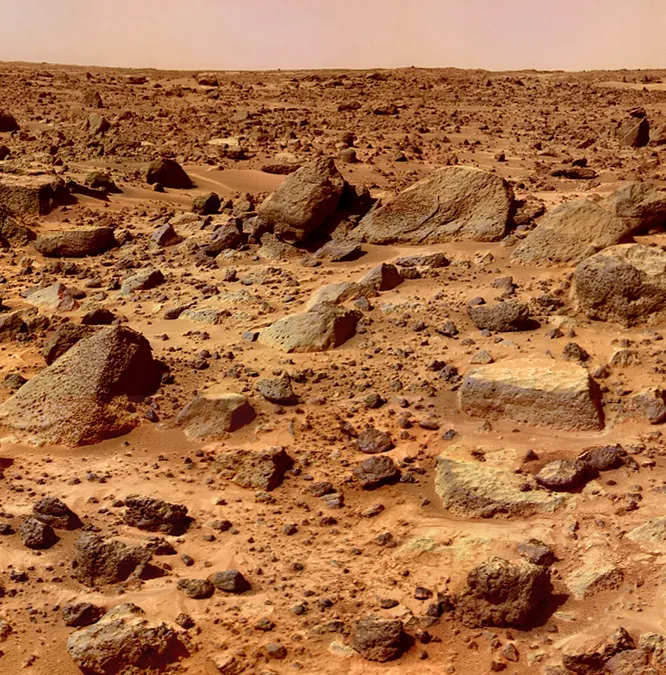
Unlocking Mars' Secrets: How Sample Returns Could Change Our Understanding of the Red Planet
2025-01-09
Author: Sophie
Unlocking Mars' Secrets: How Sample Returns Could Change Our Understanding of the Red Planet
Recent studies suggest that the surface of Mars might hold the key to unraveling the planet's intricate history. With geological features resembling both our Moon and Earth, Mars presents a puzzling picture that scientists are eager to decode.
Currently, our understanding of Mars’ evolution is primarily derived from spacecraft measurements and analyses of Martian meteorites that have made their way to Earth. Discovered mainly in Africa and Antarctica, these meteorites fall into two categories: shergottites and nakhlites. Each type contributes distinct insights into the red planet's geological past, hinting at both its age and activity level.
In a groundbreaking study published in the Proceedings of the National Academy of Sciences, researchers from Lawrence Livermore National Laboratory (LLNL) argue that direct samples collected from specific Martian locations, as part of upcoming sample return missions, could significantly enhance our understanding. "Right now, we rely on minuscule samples, often smaller than a thumb, to extrapolate the entire evolutionary narrative of Mars. It’s like trying to reconstruct the full landscape of the Himalayas from a tiny grain of sand from the ocean," stated LLNL researcher Lars Borg.
Shergottites, which date back 200 to 600 million years, exhibit similarities to lunar basaltic rocks, indicating that Mars developed a core, mantle, and crust early in its history before entering a prolonged period of relative dormancy. In stark contrast, nakhlites, which are approximately 1.3 billion years old, suggest that Mars formed its core, mantle, and crust even earlier and had ongoing geological activities similar to those on Earth. This contradictory evidence has left researchers baffled, as no other planet showcases such a perplexing array of geological clues.
LLNL has been at the forefront of measuring and dating various Martian meteorites, and the lab is currently updating its facilities to prepare for NASA's Mars Sample Return Campaign. This mission aims to return samples collected by the Perseverance rover back to Earth. "Our contributions to upcoming sample return missions are essential, particularly as they tie into a broader agenda which includes exploring human return to the Moon through NASA's Artemis program," remarked LLNL researcher Thomas Kruijer.
By analyzing the Martian samples and their precise origins, Borg and his team are optimistic about crafting a comprehensive model that explains the formation and evolution of Mars. The implications of this research extend beyond Mars alone; understanding the planet's history can provide critical insights into Earth's formation and the evolution of terrestrial planets as a whole.
"Studying samples from the only celestial body in our solar system that bears any resemblance to Earth could potentially illuminate the pathways of our planet's development, the rise of civilization, and even address the age-old question of whether we are alone in the universe," added Borg.
As excitement builds around these future missions, the prospect of revealing Mars’ secrets intrigues not just scientists, but also the public, fueling our collective imagination about life beyond our world. Could this be the breakthrough that turns science fiction into science fact? Stay tuned as we await the results from Mars!



 Brasil (PT)
Brasil (PT)
 Canada (EN)
Canada (EN)
 Chile (ES)
Chile (ES)
 Česko (CS)
Česko (CS)
 대한민국 (KO)
대한민국 (KO)
 España (ES)
España (ES)
 France (FR)
France (FR)
 Hong Kong (EN)
Hong Kong (EN)
 Italia (IT)
Italia (IT)
 日本 (JA)
日本 (JA)
 Magyarország (HU)
Magyarország (HU)
 Norge (NO)
Norge (NO)
 Polska (PL)
Polska (PL)
 Schweiz (DE)
Schweiz (DE)
 Singapore (EN)
Singapore (EN)
 Sverige (SV)
Sverige (SV)
 Suomi (FI)
Suomi (FI)
 Türkiye (TR)
Türkiye (TR)
 الإمارات العربية المتحدة (AR)
الإمارات العربية المتحدة (AR)